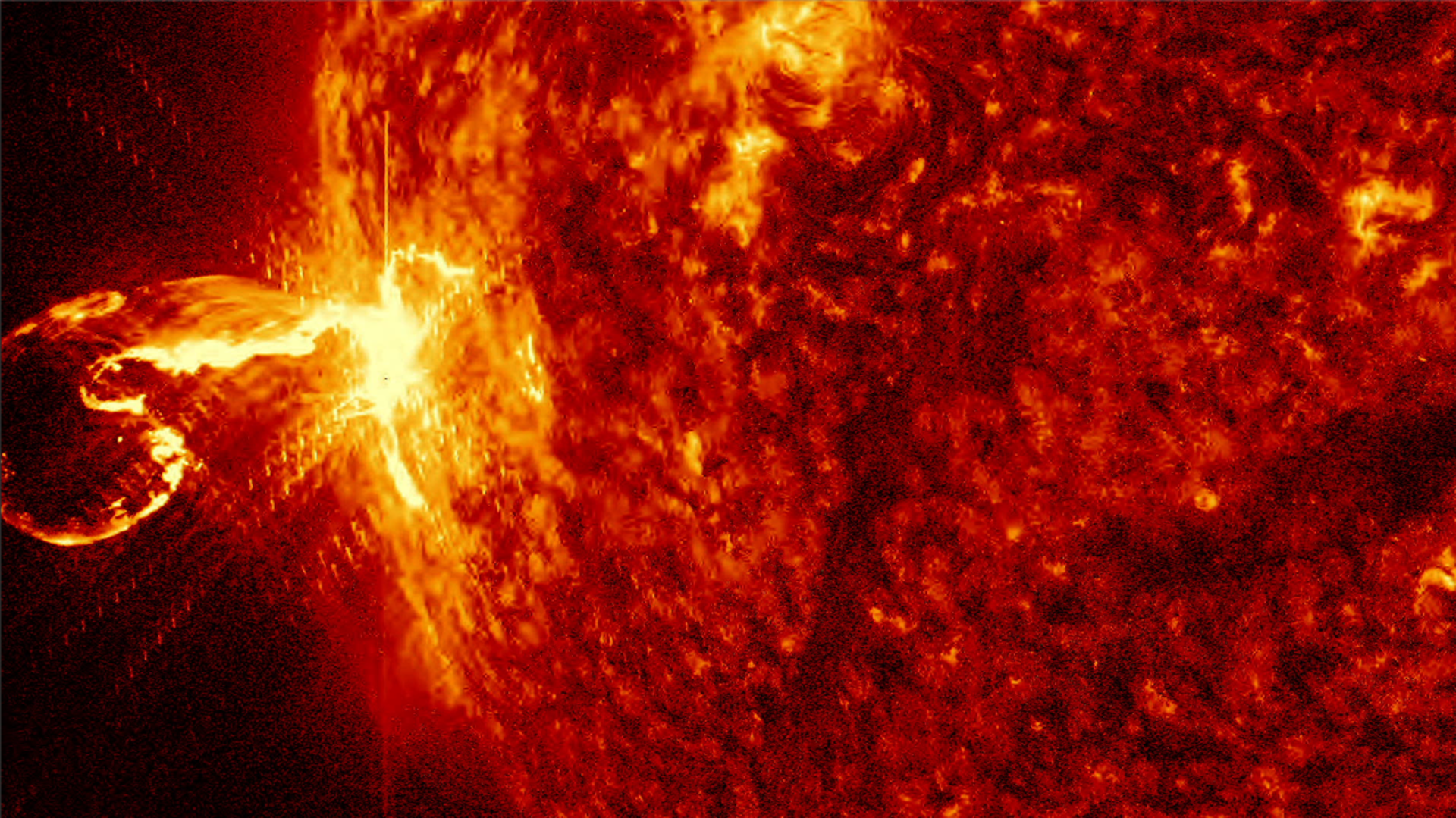
CME might hit Earth tomorrow: Know what caused it
What's the story
A Coronal Mass Ejection (CME) could strike Earth tomorrow i.e. May 16. CMEs are huge expulsions of plasma and magnetic fields from the Sun's corona, its outer atmosphere.
The CME expected to reach our planet is also said to spark G-1 class geomagnetic storms. Fortunately, it is not expected to cause harm.
But what caused the CME in the first place?
Context
Why does this story matter?
CMEs are frequently associated with solar flares, which are essentially explosions on the Sun's surface. These eruptions have become rather common lately and there is a reason for it.
The Sun is inching toward the peak of its current 11-year solar cycle, which is expected to occur sometime in 2024. This could explain why we are hearing more about solar flares and CMEs.
Reason
The CME was hurled into space on May 12
Per spaceweather. com, the CME was ejected on May 12 due to "an erupting filament of magnetism in the Sun's southern hemisphere" and is described as "relatively faint and slow-moving."
Usually, a CME takes about three to five days to reach Earth once expelled from the Sun.
CMEs travel at speeds ranging from lesser than 250km/s to nearly 3,000km/s.
Detail
Slow CMEs can take several days to reach our planet
The fastest Earth-directed CMEs can reach our planet in about 15-18 hours, according to the National Oceanic and Atmospheric Administration (NOAA).
CMEs "expand in size as they propagate away from the Sun and larger CMEs can reach a size comprising nearly a quarter of the space between Earth and the Sun by the time it reaches our planet."
CMEs
CMEs can cause visually stunning auroras
When a CME reaches Earth, it comes in contact with the magnetosphere, a comet-shaped bubble that protects the planet from harmful cosmic and solar radiation.
This interaction can cause an outburst of particle radiation into Earth's upper atmosphere.
Due to interaction with gas molecules in Earth's atmosphere, the radiation causes the molecules to discharge light, causing them to glow, resulting in stunning auroras.
Information
CMEs can affect communication systems and cause power outages
While CMEs can cause beautiful auroras, they can have negative impacts as well. They can affect satellites, hamper communication systems, and disrupt radio transmissions. CMEs can also cause a rise in electrical currents which can overload power grids leading to widespread blackouts.
Rankings
'No more than minor G1-class geomagnetic storms are expected'
The CME which is supposed to reach Earth tomorrow is said to spark, "minor G1-class geomagnetic storms," per spaceweather.com.
Geomagnetic storms, which are ranked by their severity by the NOAA Geomagnetic Storm Scale, are represented by a 'G' followed by a number from 1 to 5.
Class 5 ranks as an extreme event, while class 1 is a relatively minor event.